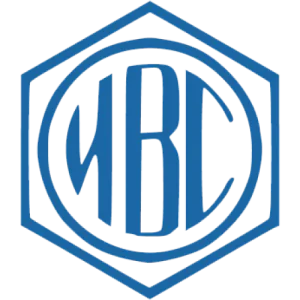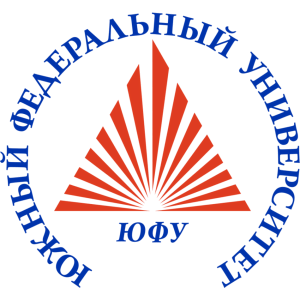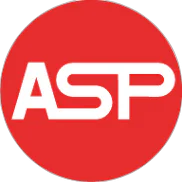The influence of thermal treatment conditions (solvothermal versus microwave) and solvent polarity on the morphology and emission of phloroglucinol-based nitrogen-doped carbon dots
Pavel Khavlyuk
1, 2, 3, 4, 5
,
Evgeniia A. Stepanidenko
1, 2, 3, 4, 5
,
Daniil P. Bondarenko
1, 2, 3, 4, 5
,
Denis V. Danilov
6
,
A. V. Koroleva
6
,
Aleksandra V. Koroleva
4, 5, 7
,
Alexander E. Baranov
1, 2, 3, 4, 5
,
Vladimir G. Maslov
1, 2, 3, 4, 5
,
Peter Kasak
8, 9, 10, 11
,
Anatoly V. Fedorov
1, 2, 3, 4, 5
,
Elena V. Ushakova
1, 2, 3, 4, 5, 12, 13
,
Andrey L. Rogach
1, 2, 3, 4, 5, 12, 13, 14
2
Center of Information Optical Technologies
4
Saint Petersburg
|
5
Russia
|
9
Center for Advanced Materials
11
Qatar
|
13
Department of Materials Science and Engineering
Publication type: Journal Article
Publication date: 2021-01-01
scimago Q1
wos Q1
SJR: 1.245
CiteScore: 9.9
Impact factor: 5.1
ISSN: 20403364, 20403372
PubMed ID:
33522554
General Materials Science
Abstract
The optical properties of chemically synthesized carbon dots (CDs) can be widely tuned via doping and surface modification with heteroatoms such as nitrogen, which results in a range of potential applications. Herein, two most commonly used synthesis approaches, namely, solvothermal and microwave-assisted thermal treatments, have been used for the preparation of CDs from phloroglucinol using three different nitrogen containing solvents, namely, ethylenediamine, dimethylformamide, and formamide. Based on the analysis of the morphology and optical properties, we demonstrate the tenability of the CD appearance from amorphous or well-carbonized spherical particles to onion-like ones, which is controlled by solvent polarity, whereas the thermal treatment conditions mostly influence the degree of N-doping and the nature of emissive centers of CDs formed. The findings of this study expand the toolkit of the available CDs with variable morphology and energy structure.
Found
Nothing found, try to update filter.
Found
Nothing found, try to update filter.
Top-30
Journals
|
1
2
3
|
|
|
Nanomaterials
3 publications, 9.38%
|
|
|
Carbon Letters
2 publications, 6.25%
|
|
|
Carbon
2 publications, 6.25%
|
|
|
Journal of Optical Technology (A Translation of Opticheskii Zhurnal)
2 publications, 6.25%
|
|
|
Journal of Biomedical Nanotechnology
1 publication, 3.13%
|
|
|
Materials
1 publication, 3.13%
|
|
|
Molecules
1 publication, 3.13%
|
|
|
Applied Physics A: Materials Science and Processing
1 publication, 3.13%
|
|
|
Analytical and Bioanalytical Chemistry
1 publication, 3.13%
|
|
|
Small
1 publication, 3.13%
|
|
|
ACS Applied Nano Materials
1 publication, 3.13%
|
|
|
Journal of Physical Chemistry C
1 publication, 3.13%
|
|
|
ACS Applied Bio Materials
1 publication, 3.13%
|
|
|
Materials Advances
1 publication, 3.13%
|
|
|
Journal of Materials Chemistry B
1 publication, 3.13%
|
|
|
ACS applied materials & interfaces
1 publication, 3.13%
|
|
|
Discover Nano
1 publication, 3.13%
|
|
|
Journal of Materials Chemistry C
1 publication, 3.13%
|
|
|
Polymers
1 publication, 3.13%
|
|
|
Nanotechnology
1 publication, 3.13%
|
|
|
Microchemical Journal
1 publication, 3.13%
|
|
|
International Journal of Biological Macromolecules
1 publication, 3.13%
|
|
|
ACS Photonics
1 publication, 3.13%
|
|
|
Advanced Science
1 publication, 3.13%
|
|
|
Chemical Engineering Journal
1 publication, 3.13%
|
|
|
Materials Science Forum
1 publication, 3.13%
|
|
|
Trends in Food Science and Technology
1 publication, 3.13%
|
|
|
1
2
3
|
Publishers
|
1
2
3
4
5
6
|
|
|
MDPI
6 publications, 18.75%
|
|
|
Elsevier
6 publications, 18.75%
|
|
|
Springer Nature
5 publications, 15.63%
|
|
|
American Chemical Society (ACS)
5 publications, 15.63%
|
|
|
Royal Society of Chemistry (RSC)
3 publications, 9.38%
|
|
|
Wiley
2 publications, 6.25%
|
|
|
Optica Publishing Group
2 publications, 6.25%
|
|
|
American Scientific Publishers
1 publication, 3.13%
|
|
|
IOP Publishing
1 publication, 3.13%
|
|
|
Trans Tech Publications
1 publication, 3.13%
|
|
|
1
2
3
4
5
6
|
- We do not take into account publications without a DOI.
- Statistics recalculated weekly.
Are you a researcher?
Create a profile to get free access to personal recommendations for colleagues and new articles.
Metrics
32
Total citations:
32
Citations from 2024:
12
(37%)
Cite this
GOST |
RIS |
BibTex |
MLA
Cite this
GOST
Copy
Khavlyuk P. et al. The influence of thermal treatment conditions (solvothermal versus microwave) and solvent polarity on the morphology and emission of phloroglucinol-based nitrogen-doped carbon dots // Nanoscale. 2021. Vol. 13. No. 5. pp. 3070-3078.
GOST all authors (up to 50)
Copy
Khavlyuk P. et al. The influence of thermal treatment conditions (solvothermal versus microwave) and solvent polarity on the morphology and emission of phloroglucinol-based nitrogen-doped carbon dots // Nanoscale. 2021. Vol. 13. No. 5. pp. 3070-3078.
Cite this
RIS
Copy
TY - JOUR
DO - 10.1039/d0nr07852b
UR - https://xlink.rsc.org/?DOI=D0NR07852B
TI - The influence of thermal treatment conditions (solvothermal versus microwave) and solvent polarity on the morphology and emission of phloroglucinol-based nitrogen-doped carbon dots
T2 - Nanoscale
AU - Khavlyuk, Pavel
AU - Stepanidenko, Evgeniia A.
AU - Bondarenko, Daniil P.
AU - Danilov, Denis V.
AU - Koroleva, A. V.
AU - Koroleva, Aleksandra V.
AU - Baranov, Alexander E.
AU - Maslov, Vladimir G.
AU - Kasak, Peter
AU - Fedorov, Anatoly V.
AU - Ushakova, Elena V.
AU - Rogach, Andrey L.
PY - 2021
DA - 2021/01/01
PB - Royal Society of Chemistry (RSC)
SP - 3070-3078
IS - 5
VL - 13
PMID - 33522554
SN - 2040-3364
SN - 2040-3372
ER -
Cite this
BibTex (up to 50 authors)
Copy
@article{2021_Khavlyuk,
author = {Pavel Khavlyuk and Evgeniia A. Stepanidenko and Daniil P. Bondarenko and Denis V. Danilov and A. V. Koroleva and Aleksandra V. Koroleva and Alexander E. Baranov and Vladimir G. Maslov and Peter Kasak and Anatoly V. Fedorov and Elena V. Ushakova and Andrey L. Rogach and others},
title = {The influence of thermal treatment conditions (solvothermal versus microwave) and solvent polarity on the morphology and emission of phloroglucinol-based nitrogen-doped carbon dots},
journal = {Nanoscale},
year = {2021},
volume = {13},
publisher = {Royal Society of Chemistry (RSC)},
month = {jan},
url = {https://xlink.rsc.org/?DOI=D0NR07852B},
number = {5},
pages = {3070--3078},
doi = {10.1039/d0nr07852b}
}
Cite this
MLA
Copy
Khavlyuk, Pavel, et al. “The influence of thermal treatment conditions (solvothermal versus microwave) and solvent polarity on the morphology and emission of phloroglucinol-based nitrogen-doped carbon dots.” Nanoscale, vol. 13, no. 5, Jan. 2021, pp. 3070-3078. https://xlink.rsc.org/?DOI=D0NR07852B.

















